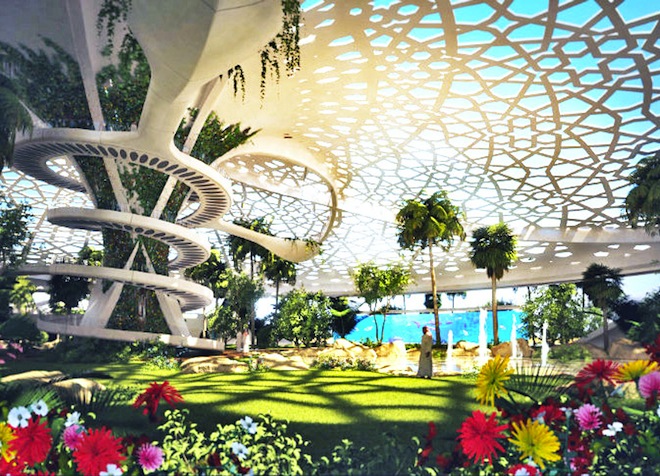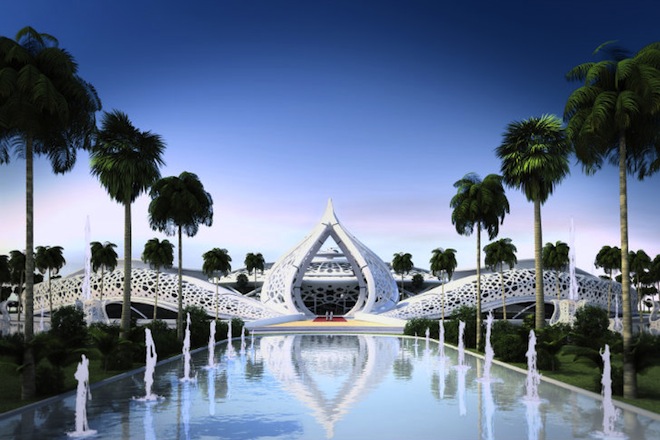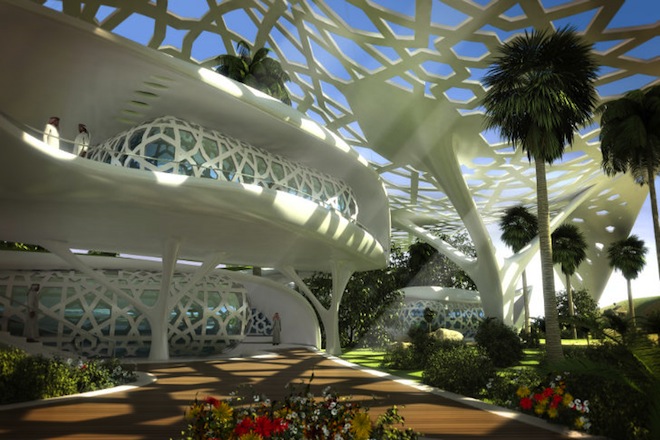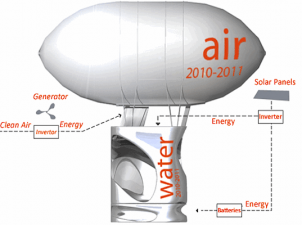 Living large isn’t sustainable, at least that is what most green hearts tend to believe, but Sanzpont Arquitectura disagrees. Invited to participate in an international competition to design a private residence in Qatar, the studio came up with ‘A Palace for Nature’ – a magnificent solar-powered palace modeled after the sidra tree.
Living large isn’t sustainable, at least that is what most green hearts tend to believe, but Sanzpont Arquitectura disagrees. Invited to participate in an international competition to design a private residence in Qatar, the studio came up with ‘A Palace for Nature’ – a magnificent solar-powered palace modeled after the sidra tree.
Sanzpont Arquitectura was among a select group of architects asked to submit a proposal for the palatial residence, and received third prize with ‘A Palace for Nature.’
Most curious to us, who have watched the green design movement slowly gather pace throughout the Middle East, is the extent to which the Spanish/Mexican architects emphasized nature in their proposal.
Whereas so many projects give a passing nod to daylighting or solar energy, this design proposal literally establishes a palace for nature. Not in it. But for it.
A contemporary take on various cultural motifs, such as the ubiquitous dome, and modeled after the sidra tree indigenous to the region, the 2,2925 square meter grounds incorporate both indoor and outdoor gardens, a sweeping shaded entryway, and the main dome covered with a perforated, undulating roof.
Photovoltaic panels are integrated into the roof’s outer skin, while a misting system built into the inner skin helps to maintain a comfortable microclimate. Everywhere there is greenery, a veritable oasis.
But Qatar is in the desert. How can the palace grounds be so lush? This is where it gets, tricky, where it so frequently gets tricky in the Middle East.
Too often, even in the middle of the desert where it’s not appropriate, developers in the Middle East associate being green with actual greenery – even the kind that can’t sustain itself in an arid, hot environment, where water is terribly scarce.
To account for this problem, Sanzpont proposes to not only recycle grey water, which is great, and an essential component of any new project in water scare Gulf countries, but there is one small way in which this firm that we typically respect a great deal goes wrong: they hope to derive water from underground aquifers.
Granted, in most coastal regions, groundwater is so salty that it is currently not fit for drinking, which is why Sanzpont proposes to build an on-site desalination facility and store water in landscaping pools, but the Gulf peninsula’s underground aquifers are incredibly valuable – not just for this generation, but for those to come, so they ought to be protected at all costs.
Are we really going to use it to make a palace so verdant?
Other than that, this project reveals that the Middle East is embracing more responsible design, that not all Arabs drive gold Mercedes and drink bottled water worth nearly $3,000.
In addition to producing its own clean energy, the energy that the residence does require is reduced by natural ventilation, daylighting, and LED lights.
“Architecture design should be integrated with its surrounding environment should reflect its culture in time,” writes Sanzpont, “so we studied their historical typologies and architectural language to evolve it into innovative vanguard design plenty of cultural heritage.”







I very like the green integration betwin the neture and houses its very lovely to see it
zohara klein interior design
I very like the green integration betwin the neture and houses its very lovely to see it
zohara klein interior design . http://www.zohara-klein.co.il